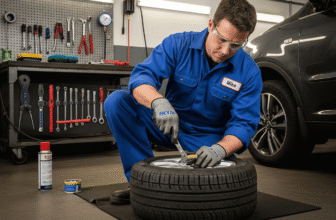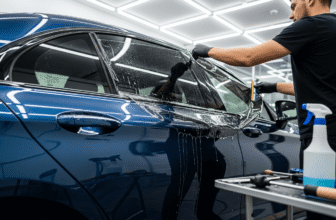
Introduction
As the demand for electric vehicles (EVs) rises globally, manufacturers are continually refining and enhancing the components that make these vehicles reliable and efficient. Among these components, rubber plays a vital role in ensuring electric vehicles meet the unique demands of the industry. Innovations in rubber technology have led to the development of materials that improve EV performance, safety, and durability. In this blog, we explore how rubber materials are advancing to meet the growing challenges and opportunities in the electric vehicle market.
The Role of Rubber Components in EVs
Electric vehicles depend on numerous rubber components to support critical functions such as insulation, vibration damping, and sealing. As EVs typically generate less noise than traditional internal combustion engine (ICE) vehicles, they also present new challenges in terms of noise and vibration management. Additionally, electric vehicles tend to run hotter due to battery operation and generate higher torque, making the selection of durable rubber materials essential.
Key functions of rubber in EVs include:
– Thermal Management: Efficient heat resistance in rubber seals and gaskets ensures motor and battery performance remains stable, even under high operating temperatures.
– Vibration Control: The quietness of electric motors magnifies any vibration, requiring specialized rubber damping materials to enhance passenger comfort.
– Electrical Insulation: Rubber is crucial for insulating sensitive electrical systems, protecting them from external environmental factors such as moisture or contaminants.
New Rubber Materials for EV Applications
The rapid shift toward electrification is driving innovation in the rubber industry. Manufacturers have developed specialized rubber materials designed to improve the efficiency and durability of electric vehicles.
1. EPDM (Ethylene Propylene Diene Monomer): EPDM is one of the most widely used rubber materials in EVs due to its outstanding heat resistance and long service life. Its weatherproof properties make it ideal for gaskets, seals, and weatherstripping applications in electric vehicles.
2. Silicone Rubber: Known for its excellent thermal stability and electrical insulation, silicone rubber is commonly used in high-performance applications such as battery compartments and motor housing. Its ability to withstand extreme temperatures makes it invaluable for electric vehicles that require thermal protection.
3. Fluorosilicone: For components exposed to fuel, oils, or chemicals, fluorosilicone is an excellent choice. Fluorosilicone’s chemical resistance makes it highly effective for use in electric powertrains and fluid management systems.
4. Thermoplastic Elastomers (TPEs): TPEs are gaining popularity in the EV sector due to their recyclability and adaptability. TPE components can be used in vehicle interior components, offering a balance between flexibility and durability.
Enhancing NVH (Noise, Vibration, and Harshness) in Electric Vehicles
As electric vehicles are quieter than traditional cars, managing Noise, Vibration, and Harshness (NVH) has become more important. Without engine noise to mask other sounds, even slight vibrations or road noise can become noticeable. Rubber materials play a key role in mitigating these issues.
– Vibration Dampening: Rubber vibration dampers reduce unwanted vibrations and noise generated by the electric motor. By absorbing shock and vibration, these components contribute to a smoother and quieter driving experience.
– Seals and Gaskets: Acoustic seals made from advanced rubber materials help block out external noise, improving cabin quietness and passenger comfort. These seals also help maintain the vehicle’s aerodynamic efficiency, enhancing its overall performance.
Electric Vehicle Battery Insulation
One of the most critical components of an electric vehicle is the battery, which requires robust insulation to ensure safety and longevity. Rubber materials, particularly silicone, are frequently used in battery insulation due to their high heat resistance and durability.
1. Thermal Insulation: Batteries in electric vehicles can generate significant heat, especially during charging and discharging cycles. Silicone rubber is often used to insulate these components due to its ability to withstand extreme temperatures and prevent overheating.
2. Vibration Control in Battery Packs: As EVs are subject to constant movement and vibration, rubber components are used to secure and protect battery packs. Rubber gaskets and seals ensure that the battery is shielded from external elements such as dust and moisture, enhancing battery lifespan.
Rubber Technology Advancements for EV Durability
In addition to the traditional benefits of rubber components, recent advancements have focused on enhancing their durability and environmental sustainability.
1. Recycled Rubber: The push for sustainability in the automotive industry has led to the development of recycled rubber materials. Using post-consumer and post-industrial rubber in EV components reduces waste and supports a circular economy.
2. Bio-Based Rubber: Research into bio-based rubbers, derived from renewable resources such as plant-based materials, is showing promise as an eco-friendly alternative. These materials could reduce the environmental footprint of rubber manufacturing while maintaining the performance standards required for electric vehicles.
Applications Across Different EV Components
Rubber’s versatility and performance characteristics make it suitable for use in various EV components:
– Gaskets: Used in sealing systems to protect internal components from contaminants.
– O-Rings: Provide tight seals in fluid management systems to prevent leaks.
– Motor Mounts: Absorb shock and minimize vibrations to improve overall vehicle stability.
– Electrical Insulation: Used in high-voltage applications to safeguard electronic components and prevent short circuits.
The Future of Rubber in Electric Vehicles
As the electric vehicle industry continues to grow, the demand for high-performance, eco-friendly rubber components will increase. Future innovations may include:
– Smart Rubber Materials: These materials can change properties in response to environmental conditions, providing better performance in extreme temperatures or hazardous environments.
– Enhanced Sustainability: Further development of biodegradable and recyclable rubber products will help manufacturers meet environmental regulations and reduce their carbon footprint.
– Lightweight Rubber Composites: Lighter materials can improve vehicle range and energy efficiency, key considerations for electric vehicles.
Conclusion
Rubber technology is evolving to meet the specific needs of the electric vehicle industry. From advanced materials that improve thermal management and electrical insulation to innovations that enhance NVH, rubber plays a vital role in ensuring EVs are durable, safe, and efficient. Excel Rubber Industries remains at the forefront of these innovations, offering high-performance rubber solutions tailored to the demands of electric vehicles. As EV adoption increases, the importance of rubber components in delivering a smooth, quiet, and energy-efficient ride cannot be overstated.
By embracing the latest advancements in rubber materials, manufacturers like Excel Rubber Industries continue to shape the future of electric vehicles, providing essential components that ensure optimal performance and longevity.







